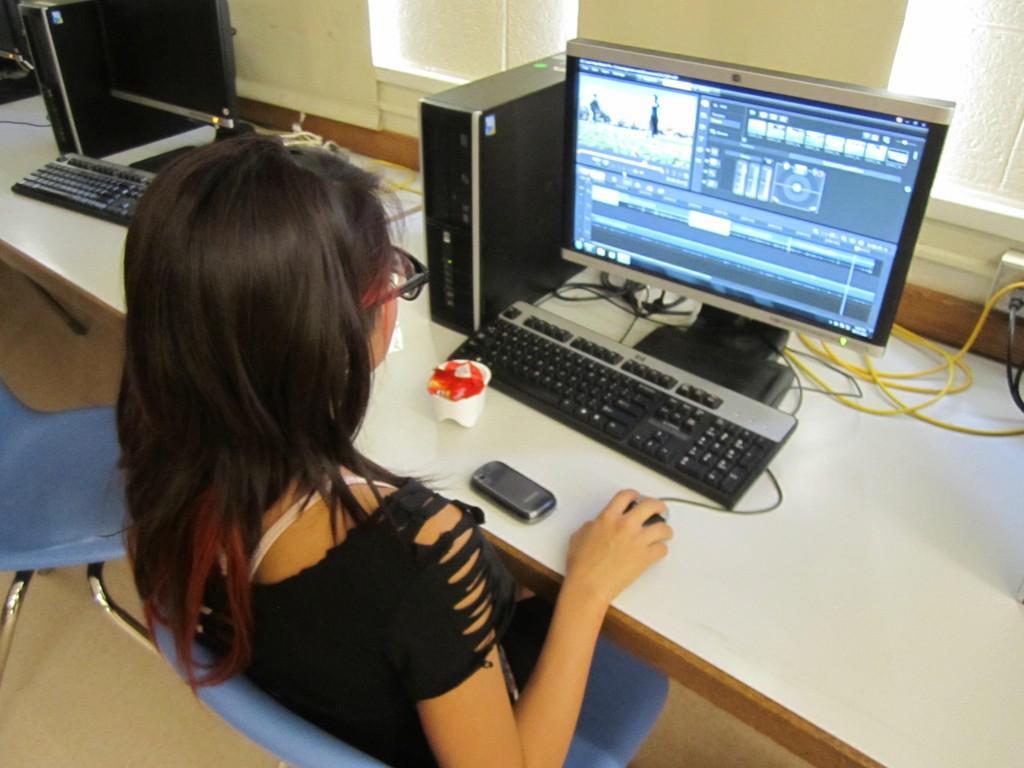This week we have a guest blogger, Margi Dashevsky. Margi currently serves as the Co-Director of the Latin American Center for Arts Science and Education (CLACE). She has a passion for sharing her love of learning with others and has worked as a science educator for over a decade. She graduated with honors from Dartmouth College, where she majored in Environmental Studies, with a concentration in Field Ecology, and minored in Geography. Margi grew up in Fairbanks, Alaska, and now lives in Boulder, Colorado.
Students often struggle to understand the difference between weather and climate, yet this topic is throughout K-12 education in the Next Generation Science Standards due to be released in April 2013 in the United States. In collaboration with GLOBE, CLACE developed some fun and engaging ways to explore fundamental concepts of climate literacy through an inquiry based video project. CLACE works to inspire and engage diverse students in science, this specific program is a bilingual Video Lab for Latino students in Boulder, Colorado, USA.

CLACE Students use their video camera to explore climate. Photo courtesy of CLACE.
As a teacher I was surprised on day one with how challenging it was to explain the key distinctions between weather and climate to my sixth to eighth grade students. At first I relied heavily on a commonly used analogy: if climate is all the clothes in your closet, then weather is what you’re wearing today. In an effort to connect with the students we encouraged them to come up with their own analogies. As I dug deeper, I recognized my over-simplified understanding would perpetuate misconceptions.
By collaborating with GLOBE scientists and educators we created a series of lessons and criteria for students to develop their own analogies that explain the difference between weather and climate. The examples used in the analogies had to satisfy the following criteria: 1) climate is a long term pattern 2) weather changes frequently and 3) the climate is the average of the weather.
We met the students where they were at and together we deepened our understanding and then created short videos to share what we learned. The result was a series of videos explaining analogies from the students’ own imaginations that resonate with their lives. For example, if climate is the average goals I score each game for my middle school soccer team then weather are the goals I score in a single game.
We started with a simple question: what’s the difference between climate and weather? By following our middle school students’ lead we found it’s really not as simple as it appears and led to rewarding conversations and countless other questions. By investigating this basic concept our students built their own foundation of climate literacy.
Suggested activity: View more of CLACE’s videos at the following link: https://www.youtube.com/watch?v=_nlwfV8cfqc. These videos are available in both English and Spanish. Also, be sure to follow along with The GLOBE Program on Facebook starting in April as we announce the winners of the 2013 Earth Day Video Competition. And there’s still time to prepare for the 2013 Virtual Student Conference, and the CLACE videos may provide some great inspiration. The Virtual Student Conference will begin accepting presentations on 6 May.



Thanks for the blog Margi! interesting read.
You’re so awesome! I do not think I’ve read a single thing like this before. So great to find another person with unique thoughts on this subject matter. Really.. thank you for starting this up. This site is something that’s needed on the internet, someone with a bit of originality!